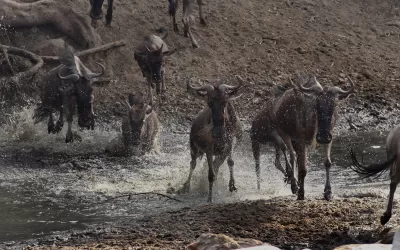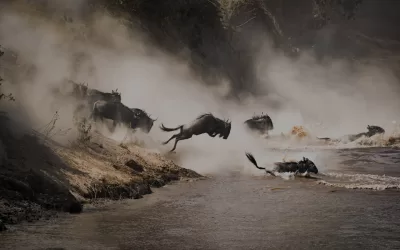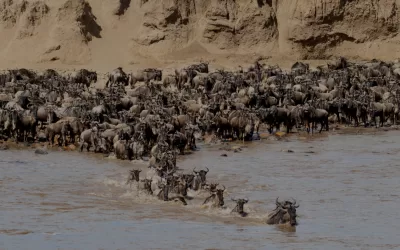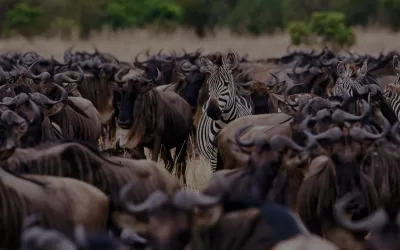The Serengeti Wildebeest Migration in Tanzania is one of the most spectacular wildlife events on the planet. It is a continuous cycle of movement that takes place throughout the year as more than a million wildebeest, along with hundreds of thousands of zebras and gazelles, journey in search of fresh grazing and water. Here is some content highlighting the incredible phenomenon of the Serengeti Wildebeest Migration
The Serengeti Wildebeest Migration is a natural phenomenon that occurs in the Serengeti ecosystem, which spans across Tanzania and Kenya. It is a breathtaking event where massive herds of wildebeest, accompanied by zebras and gazelles, migrate in search of food and water. This annual cycle is driven by the changing seasons and is considered one of the most remarkable wildlife spectacles in the world.
The Great Migration Route
The wildebeest migration follows a circular route in the Serengeti, covering a distance of approximately 1,800 miles (2,900 kilometers). The journey takes the animals through various habitats, including open plains, woodlands, and river crossings. The migration path is influenced by the availability of fresh grass and water, which determines the movement of the herds.
Timing and Seasons
The migration is a year-round process, but the timing and location of the herds’ movements change with the seasons. The cycle begins in the southern Serengeti and Ngorongoro Conservation Area around December and January, where the wildebeest give birth to their young during the calving season. The herds then start moving northward in search of lush grasses.
River Crossings
One of the most dramatic and thrilling moments of the migration is the river crossings. The Mara River, which forms a natural barrier between Tanzania and Kenya, is a challenging obstacle for the migrating herds. They must navigate treacherous currents and face lurking crocodiles. The crossings are awe-inspiring, with thousands of wildebeest braving the waters in a surge of mass movement.
Predators and the Circle of Life
The Serengeti Wildebeest Migration is not only about the wildebeest but also the predators that follow them. Lions, cheetahs, hyenas, and other predators take advantage of this abundance of prey and ensure their own survival. The migration creates a dynamic ecosystem where the balance between predator and prey is vital for the overall health of the Serengeti.
Hot Air Balloon Safaris
Experiencing the Serengeti Wildebeest Migration from a hot air balloon provides a unique and breathtaking perspective. Floating above the vast plains, you can witness the expansive herds below, their synchronized movements, and the panoramic beauty of the Serengeti landscape. It is an unforgettable way to capture the grandeur of this natural phenomenon.
Conservation Efforts
Preserving the Serengeti Wildebeest Migration and its delicate ecosystem is crucial. Conservation organizations and national park authorities work tirelessly to protect the habitat, manage the human impact, and combat poaching. By promoting sustainable tourism practices and raising awareness, efforts are being made to ensure the long-term survival of this iconic migration.
Cultural Significance
The Serengeti Wildebeest Migration holds deep cultural significance for the indigenous Maasai people who have lived in harmony with these lands for centuries. Their traditions, customs, and connection to the wildlife enrich the overall experience of visiting the Serengeti. Learning about their way of life and witnessing their cultural practices adds another layer of appreciation to this extraordinary event.



